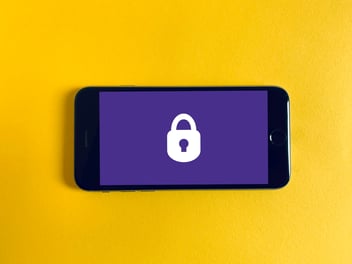6 Elements to Safe SIP Trunking
SIP trunking is a reliable technology that is becoming more and more popular and utilized by businesses as offered by their telecom partners. Eastern Management Group (EMG) surveyed 40,000 IT managers from around the world and found that SIP traffic is anticipated to increase by 25% by the year 2024. Despite its extensive use and promising prospects, some people are still cautious and doubtful about SIP trunking's security and benefits.
SIP trunking is secure and only distributes the information that is needed to send and receive, as those who have integrated this technology are aware of its favorable and secure functionalities. SIP is therefore not seen as a network security vulnerability but as a benefit. However, if implemented incorrectly, incorporating SIP trunking into established organizational practices might lead to network risks; which is why it is important to practice safe SIP trunking.
Businesses can take a number of measures to further ensure that their telecom and/or VoIP providers are secure against cyberattacks. The following are 6 elements to safe and secure SIP trunking for businesses and service providers.

#1. Manage and Update Hardware and Software Regularly
Hackers and other cyberattackers will put in an endless effort to find vulnerabilities in any of your cloud-based applications. Word spreads quickly when a weak network spot is identified. Regular and timely software and hardware upgrades ensure that security flaws are fixed. Customer retention management, PBX, unified communications, and any other software that runs on or accesses organizational networks must all be updated carefully for this reason. One of the leading causes of toll fraud is the failure to maintain updated firmware and software versions. Toll fraud, also known as VoIP fraud, is when a hacker gains access to your phone system and uses your account to place fraudulent calls, often to foreign locations. They accomplish this by utilizing cutting-edge hardware and software to recognize vulnerable systems and locate their weak points.
#2. Require Complex Passwords from All Users
Your data's security and a vast list of hackers eager to hack into your systems are separated by just a few varying characters. Extensive brute-force attacks against high-level encryption are also increasingly practical as processing power increases. Cyberattacks pose one of the most immediate security risks because they utilize automated algorithms to try common and default passwords in each password field until they succeed, frequently taking just a few seconds.
Create policies requiring strong passwords on all accounts, including desk phones and voicemail profiles, to prevent a hack. Frequently changing passwords is also a good idea. Every IT professional will agree that security is only as strong as its weakest link. The horror stories regarding VoIP and SIP vulnerabilities are frequently caused by inadequate network security, not by problems with SIP trunking.
#3. Seek Trusted, Authenticated SIP Providers
Your PBX needs to be secured because it could serve as a point of entry for security threats. By adding trusted SIP connections to an IP whitelist, firewalls should be configured to only allow those. By doing this, it will be made sure that unauthorized intruders cannot access private accounts.
#4. Authenticate Access to Certain Accounts Based on IP Addresses
After your IP network has been suitably secured, you can prevent unauthorized access by restricting the IP addresses that are allowed to access your telephony resources. Only those connected to your network will be able to use your calling and messaging capabilities as a result. Craft and maintain a blacklist of IP addresses recognized as potential hazards if blocking access by IP address is impossible owing to distant users connecting from dynamic IP addresses. Additionally, third-party or customized software can keep an eye on log files and instantly block IP addresses that have made an insufficient number of unsuccessful login attempts.
#5. Understand Your Business's Signaling and Media
Use a provider that transmits media and signaling to the PSTN as two separate streams of unrelated data. This increases the security of outgoing calls and voice data by hiding the content from identification because the PSTN cannot be encrypted. Hackers will only obtain numbers and IDs if they manage to intercept signaling at the provider level; they won't have audio.
Examining SIP trunking providers and comprehending their call transmission policies is crucial. Depending on your organization's needs, some call transmission techniques may be a better fit. For instance, SIP with SRTP (or Secure Real-Time Transport Protocol) is the most secure option if end-to-end encryption is required, especially to guarantee that the call won't pass through the PSTN.
In addition, TLS (Transport Layer Security) is often used alongside Secure Real-time Transport Protocol (SRTP). TLS encrypts the signaling of the calls, which you can think of as the setup and tearing down a portion of a call, and SRTP secures the actual media.
#6. Establish Secure Connections
Increased demands on network availability are being put on it by rapid cloud adoption and "bring your own device" regulations. Unfortunately, more potential vulnerabilities to network security come along with this complexity in network availability. Establish secure connection protocols, such as secure socket layers, to allow access to your network from anywhere to protect employees' mobile connections.
Instead of broadcasting connection credentials over the open internet, you can take control of fixed remote extensions like satellite offices and homes by setting up virtual private networks. Use a nonstandard SIP port to hide the transmission and access point if a dedicated connection is impossible.
SIP connection security is only one aspect of SIP trunking security. The entire network must be secured to prevent hackers from gaining access to your business’s SIP credentials and any other sensitive data. Protecting your networks and resources from all illegal access, including access to your PBX, is the goal of good network security. With these procedures in place, you can relax knowing that your company may profit from SIP without having to worry about its security.
Still have questions about how SIP Trunking or VoIP can benefit your business? Click here to connect with one of our customer support representatives, or click here if you would like to learn more about VoIP. A member of our team will help you determine the best course of action for your business by asking the right questions, assessing your goals, and assisting you with procurement.
We look forward to working with you soon!





